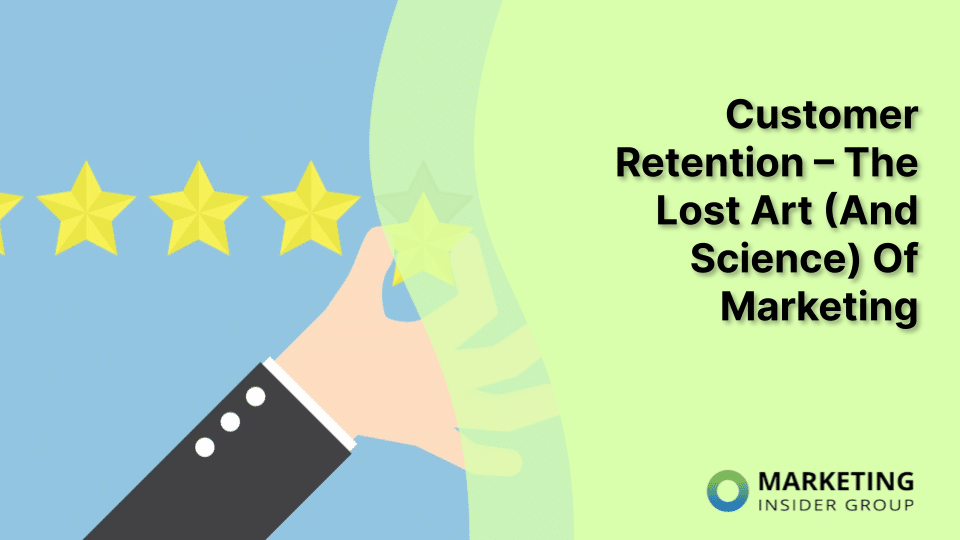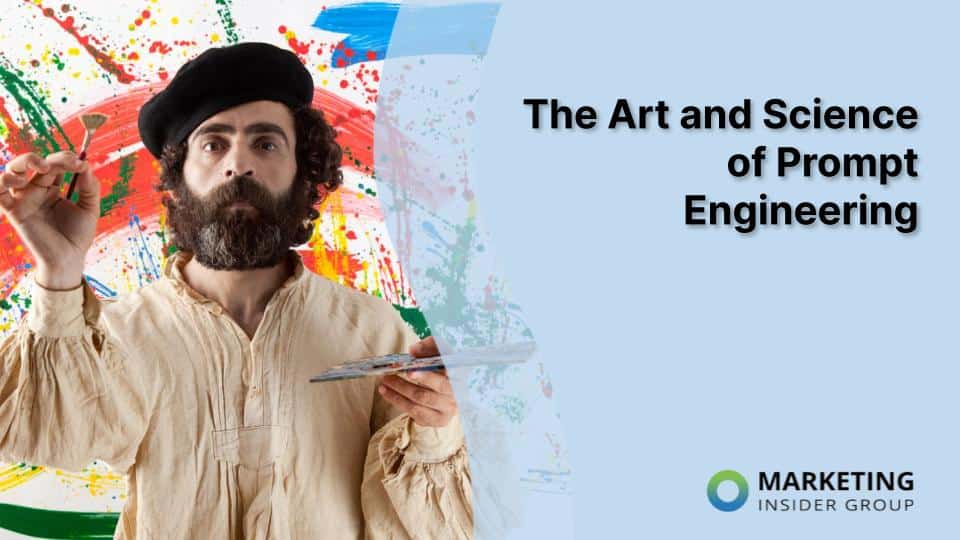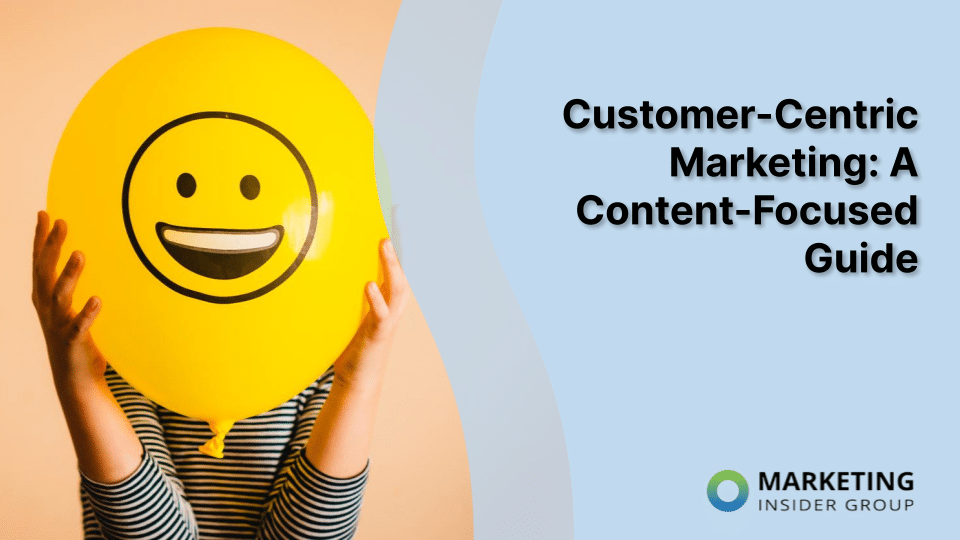
Customer Retention – The Lost Art (And Science) Of Marketing
In the past, understanding which marketing programs delivered the best results proved challenging. Today this is no longer the case. Marketing departments are swimming in data.
But the key to demonstrating ROI from marketing lies in utilizing the latest tools such as marketing automation and the all the data available to the modern marketer to make the right decisions that drive business results.
The goal of marketing is to get and keep customers (one of my favorite marketing quotes). And while much of the time, effort and money spent in marketing involves the process of getting new customers, focusing on keeping the customers you already have often provides a much higher return from marketing investments.
Remember the saying you learnt in kindergarten?
Make new friends, but keep the old. One is silver, and the other gold.
Are you spending enough energy on retaining your existing customer base, your true gold?
What Is Customer Retention?
The term customer retention is a derivative of customer loyalty — it refers to a company’s ability to keep selling to their existing customers and prevent them from switching to a competitor.
Customer retention rate is a percentage measure of customers who continue to use your product over time.
Most companies look at this on an annual basis, but companies that sell and invoice monthly (think your mobile phone, gym membership, or monthly cloud-based software) might look at this monthly.
Retention and churn rates have become a popular tool for investors to evaluate the underlying health of a firm. The higher the churn rate (the more customers that chose to leave after signing up), the more they question the company’s viability.
This is why customer loyalty and retention have become so important in measuring the value of marketing overall.
Leading companies are using customer retention as their main marketing objective to ensure that they are acquiring the right kind of customers in the first place, to predict the return on marketing overall, and to drive sales and financial forecasting models.
The Importance of Customer Retention as a Marketing Objective
Marketing programs are often tied to 3 main objectives: Brand Awareness, Engagement, and Conversion.
But there is a fourth, often forgotten objective: Customer Retention.
This is despite tremendous amounts of research showing that acquiring a new customer is anywhere from 5 to 25 times more expensive than retaining an existing one.
That’s why customer retention is so important. It makes sense when you consider that keeping a paying customer is easier than finding, convincing and converting new ones.
Research conducted by Bain & Company revealed that it costs six to seven times more to acquire a new customer than to keep existing ones. Increasing customer retention rates by 5% increases profits by 25% to 95%.
The bottom line: keeping the right customers is valuable. And it might be the most important way for marketing to prove its value to the C-suite.
Old Customers Will Drive New Business
Another advantage of fortifying the interest and loyalty of your existing customers is the referral phenomena. Not only is it more expensive to chase new leads but your loyal customers are the ones who are probably going to be behind future revenue growth. Many of today’s CEOs are putting more pressure on CMOs to include revenue growth on their already lengthy to-do lists. Need to prove your marketing worth through revenue growth?
No problem. Your customer base can help.
Think of your loyal customers as your Praetorian Guard. They are there for you. They’ll make sure you are victorious each day. According to research agency, Gartner Group, a hefty chunk of a company’s future revenue growth, about 80%, will come from a modest and dependable 20% portion of their existing customers.
Repeat customers who derive value from what a business is selling are your best marketers. Through their raving online reviews, social shares, and word-of-mouth, they are capable of much more than their purchases alone.
In fact, word-of-mouth is known to be the driving force behind between 20% and 50% of purchasing choices.
Just make sure you keep them happy.
Acquiring the Right Customers in the First Place
The biggest mistake companies make when analyzing retention rates is not seeing that a high churn rate is the result of poor customer acquisition efforts.
Many companies are simply attracting the wrong kinds of customers in the first place. This can occur when price is big factor in the decision, and marketing programs that attract deal seekers will result in customers who leave as soon as they find a better deal.
So once you determine you have a retention problem, consider whether you have an acquisition problem instead. The goal of marketing is to get and keep customers who you can provide value to and who are valuable to your business. That’s why content marketing is such an effective tool for acquiring the right kind of customers: you attract people based on their interests.
How Data Analysis and Marketing Automation Boost Retention
Once a customer is acquired through all the various marketing touch points, marketing automation can provide the data to determine how much that customer spends, how much they are using your product or service, when they leave, and in some cases why.
For example, using customer data, many companies have discovered that poor customer service is the number one reason why customers leave. Using that analysis, you can target customers you suspect might cancel and offered them extra services, like training.
Marketing automation can determine which content, offers, channels, topics and types of marketing programs are delivering not just new customers, at what cost, but also can determine which programs and variables are driving customers who stay longer and spend more.
Automation provides a number of data points to improve marketing ROI and drive customer loyalty and retention.
- Marketing effectiveness overall: marketing automation allows you to measure the effectiveness of marketing ROI overall. You can see key performance indicators such as program budget, results, offer performance, leads generated and deals closed. These call all then be tied back to retention rate and spend levels by various customer segments.
- Marketing mix: marketing automation not only provides overall results, but also can be used to determine the right mix of awareness, engagement, conversion and retention campaign approaches. By using the data from marketing automation, you can model the right mix of activities to generate the highest return.
- Sales and customer service insights: marketing automation data can also be invaluable to sales and customer service teams to determine which prospects are the most important to be followed up on, and which customers might need some extra support or services.
- Content and messaging: Beyond understanding which programs and marketing mix drives the most value, data and analytics can help you determine which marketing messages and content resonate with customers who stay and spend more.
With so much data available today, marketers are able to focus their programs and investments on attracting the right kind of customers: customers who get the most value from your solutions and who return the favor in the form or customer retention, loyalty, higher revenue and even referrals.
Every Customer Deserves the Gold Treatment
It is time to make churn rate and customer retention a priority again. Churning is when you lose your existing customers. A low churn rate means you are able to keep most of the customers that your company does business with.
Your job is to get that churn rate down as much as possible. That means customers are not:
- Closing their accounts
- Choosing to purchase from a competitor
- Canceling their subscriptions
- Not renewing their service agreements
After all, it is well known that it is astronomically more expensive to find new customers than it is to market to past ones. It can cost from 5 to 25 times more to win over that new lead than to keep an old one, which is why customer retention and reducing churn is a central focus for leading marketers.
How do you retain your customers? Simple, treat them like the gold that they are.
1. Create a loyalty program that makes them feel special. To keep your loyal customers loyal, let them eat cake! Offer a simple, straightforward rewards program that truly adds value.
Think Virgin Atlantic’s Flying Club classic tier-based program or Sephora’s exclusive Beauty Insider program, which offers customers more than deals. Beauty aficionados can get their hands on limited-edition sets and free samples – prized swag that those pricey new leads don’t have access to.
2. Listen. Retaining customers is a lot like working to maintain a healthy relationship. Aside from letting them know how special they are, marketers also need to do something that may take practice. Listening. Read the feedback posted on social media channels, reviews, and in customer emails. What are people saying about the products or services you are trying to sell? What are the subtle messages behind the politeness or frustration?
The more you pay attention, to the good and the bad, the more you can learn about your existing customers and create those insightful buyer personas so you can master the next method for getting your churn rate down.
3. Communicate like you know who you are talking to. This is where you need to find the perfect balance between marketing automation and personalized communication. To make consumers feel like they matter, like they are being directly reached out to by their favorite brands, you’ve got to speak to them.
The best marketers don’t reach out to customer X. They send an email to Marcia LovesYourServices. She is a woman in her mid 40’s who doesn’t have a lot of free time. But she does enjoy treating herself to your service/product once every couple of months.
Or Fred Can’tGetEnoughofYourProduct, who is an avid industry enthusiast and appreciates being kept up-to-date with the latest industry news.
4. Chase your churners. You’ll get more value out of following up with the customers you lose than you will out of finding new customers to replace your churners with.
If someone cancels, switches to a competitor, or closes their account, politely and respectively, find out why. You can use this feedback. It can help you prevent your churn rate from growing by showing you how to make sure others don’t follow suit.
Maybe a new competitor popped up and is offering a better deal. Are some customers finding a problem with your product?
These are gems of information that marketers need to be aware of. All of a business’s lost customers may not feel inclined to respond. Some, however, will be happy to give away their two cents.
Over to You
Marketers who want record-breaking ROI need to balance old and new with digital ingenuity. It is well worth your time to focus on making sure your existing customers are happy, finding out if and how their expectations are changing, and letting them know that they are valued.
Customer retention is a foundational pillar of successful marketing. It’s your job to get maximum revenue out of it.
Are you interested in engaging and converting new customers for your business? Check out our weekly blog content service. Get started today and generate more traffic and leads for your business.






